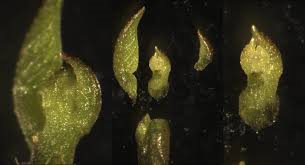
Posts Tagged: Albion
A Comment on Vigor in Strawberry Varieties
A recent article referred to one of the reasons that growers need access to new strawberry varieties is that there is an inherent loss in vigor through the propagation process. That growers need access to new varieties to remain competitive is absolutely true, but that they need access to new varieties because the existing ones decline in vigor is not.
Plants do not invariably “lose their pep after years of cloning”. Indeed, reputable nurseries avoid a loss of vigor in a variety by periodically going back to meristem culture in order to keep their plant stock strong and productive. It does happen (especially in some formerly popular caneberry varieties - compare Ollalieberry in the field today to what was around in the early nineties) that older varieties of less demand don't have the meristem work done as frequently and subsequently become less vital over time.
What is meristem culture? Meristem culture is the excision of a cluster of actively dividing cells from the meristem (tip) of a newly formed strawberry runner, followed by surface sterilization, placement on a special medium, subsequent rooting, gradual acclimation of the new plant and transfer to a secure greenhouse. While some cases of genetic instability from repeatedly doing meristem culture have been noted in the literature, this cannot be described as a drift towards a loss in vigor of a variety. At any rate, programs for production of true to type (identical) plant stock using meristem culture have been used for a long time at any of the strawberry nurseries in business today.
A good example of how well and long a popular variety can be maintained through meristem culture would be the strawberry variety ‘Chandler'. Chandler continues to be widely planted by direct marketers because consumers just love its flavor and quality. Consider though that this variety was patented in 1984 by the University of California, and has had no apparent loss in vigor in all this time because the nurseries continue to go back to meristem culture to maintain it.
Growers have rumored that the variety ‘Albion' has been losing its vigor, but work at the Pomology Field Station in Watsonville over several years shows that this was not at all true. The Albion grown at this field station has experienced NO loss in yield since it was first released. Rather the rumored "loss in vigor" of the very widely planted Albion is almost certainly because of the industry wide steady drift away from methyl bromide fumigation to less effective alternatives like 1,3-D and chloropicrin.

Strawberry meristem culture. Photo courtesy USDA-ARS
Review of Chill for the UC Day Neutral Strawberry Varieties Albion, San Andreas and Monterey
I had a conversation quite recently with Doug Shaw, UC plant breeder, concerning the concept of chill in the day neutral varieties and the desire of some Central Coast growers to reduce the recommended amounts significantly, even all the way down to zero days of chill:
In the way of review, please recall that chill requirement in strawberry in California is made up of two essential parts. One part is what the plant accumulates in the field before being harvested, and the other is accumulation of chill after harvest and the plant is in storage. There is a big difference between the two and one does not supplant the other. In-field chill takes place when the plant is still in the soil, out in the open and still has all its leaves. Supplemental chill takes place after harvest of the plant and occurs in a constant near freezing temperature, in the dark and the plant has none to very few leaves left (Figure 1 below).
Accumulation of chill, especially supplemental chill, in the strawberry transplant makes it stronger and better able to survive the stress of plant harvest, transplant and the growing season beyond.
As some of the chill sensitivity has been bred out of the modern UC day neutral varieties such as Albion, Monterey and especially San Andreas, it is indeed possible to grow these varieties with less than the recommended amounts (10-18 days) of supplemental chill. However, those who choose to reduce chill below these amounts should recognize the amount of risk they are taking and that this is not an exercise for those still using training wheels. Should growing conditions take a turn for the worse, these underchilled plants do not have the vigor to help them pull through and will suffer more than those adequately chilled. Moreover, while UC day neutral strawberry plants chilled significantly less than the recommended 10-18 days can produce fruit earlier than others (probably owing to the earlier planting date), these plants quite likely will not perform optimally in terms of overall yield and quality along with showing a tendency to produce smaller fruit later on in the season.
The only case where one would want to go short on supplemental chilling time would be if the plant harvest was so late that a minimum chill time of 10 days would result in a planting date so late that it would compromise plant growth and establishment.
Other than that, it is still recommended to give the UC day neutral varieties 10-18 days of supplemental chill.

Trimmed transplants being packaged in box with polyethylene lining, ready for placement into the cooler for supplemental chilling.
